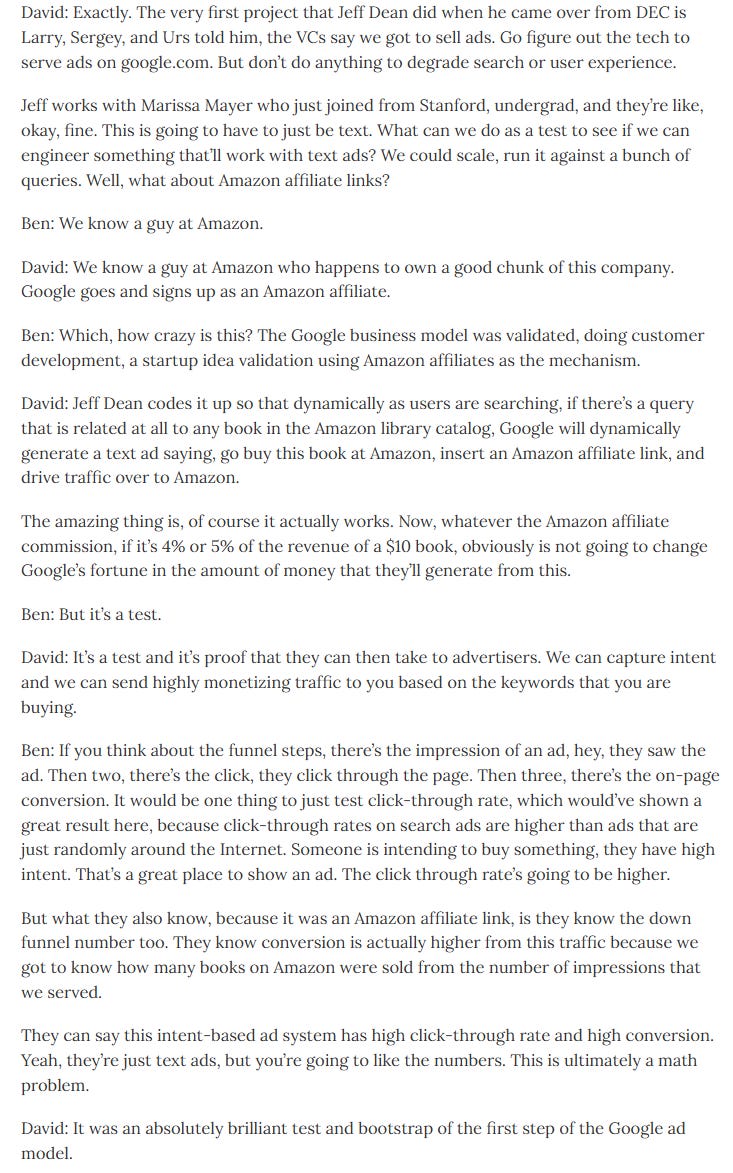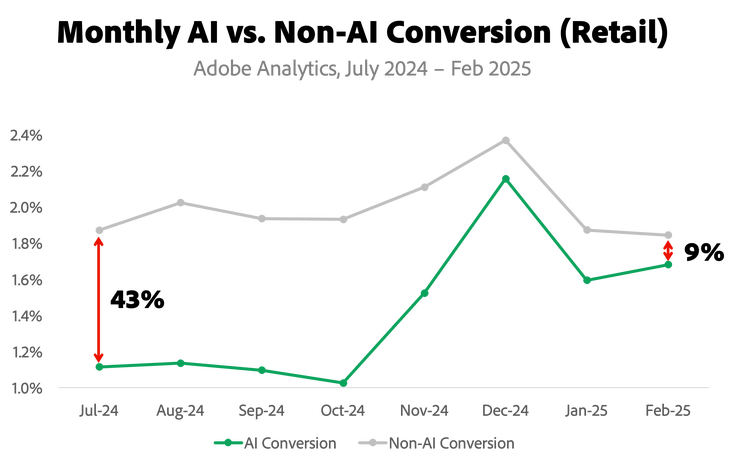MBI Daily Dose (July 18, 2025)
Companies or topics mentioned in today's Daily Dose: AMA, Voidware, OpenAI's Monetization
AMA: David Kim from Scuttleblurb and I will record an AMA episode for the next Never Sell podcast. Please reply to this email to send your questions!
Matan Zinger acquainted me with a term yesterday that I did not know before: Voidware.
What is Voidware?
Picture an app that materializes at your tap, evaporates the moment you let go, and lives entirely in an AI’s imagination; no servers, no stored code, just pure on-demand existence. This “model-is-the-app” trick is what Ohad Eder-Pressman dubs voidware: software that never truly exists before, during, or after you use it, like a soap bubble spun from machine logic. He showed a crude demo in his post what it looks like:
If an LLM can spin up a bespoke interface, backend, and data model at millisecond cost, every user effectively gets a one-off product shaped by their current intent. Matan points out the implications can be quite profound. From his piece:
Through a Voidware-style AI-generating-code-on-the-fly model, not only do users get their own personal editor, but each user also gets their own PM, designer, and engineering team!
A user turning to Twitter (fine, X) for a quick dopamine hit of memes can’t possibly be expected to share the same UX as the user looking to catch up on the latest insights around AI-assisted coding. While the former is probably well served by the existing app design, the latter would benefit from a NotebookLM-style research canvas with AI summaries. As I sometimes play the role of both of these user personas, it would be amazing if the app could – under different circumstances – understand the job I’m currently hiring it for, and morph itself accordingly.
Imagine your personal LLM-PM tracking your Instagram usage, saying to itself something like “Oh we’re diving into recipe ideas now, are we? Perhaps I should add a little button on top, that switches into a table view of your favorite recipes so far.” Then the LLM-designer sketches something, and the LLM-Software-Engineer goes ahead and adds the button. Instantly. Just for yourself.
Voidware hints at a future where apps are more like conversations, with LLMs acting as real-time product studios: think infinitely personalized UIs, ephemeral micro-services, and “feature streaming” instead of downloads. It is far from a crazy idea; Google already showed that “an interface could be generated in real time, adapting to a user's context with each interaction”.
OpenAI probably cannot afford to not monetize its free users for too long. This may be just step 1 of much broader plan of monetizing the free users; for now they’re going to take a cut from any sales made through ChatGPT by integrating a payment checkout system. There is a striking similarity to how Google also got started in their monetization journey more than two decades ago. See the below excerpt from the recent Acquired episode on Google:

Of course, there is a lot of debate whether and how much you can monetize traffic coming from the LLMs. The Diff mentioned yesterday this Adobe study which I thought was relevant: “Once users land on a travel site, Adobe Analytics data shows a 45 percent lower bounce rate among consumers coming from a generative AI source — showing a consumer who is more informed and engaged.”
As of early this year, the conversion of this traffic still lagged compared to non-AI conversion, but the way the gap narrowed in less than a year, I suspect eventually AI conversions can dwarf non-AI ones. From the study:
The conversion gap reinforces that AI is being utilized during the research and consideration stage, in advance of when shoppers are ready to hit the buy button. But the narrowing gap shows that consumers are also increasingly comfortable completing a transaction directly after an AI-powered chat experience.

There is perhaps an interesting analogy you can draw from how early internet users behaved and how the current crop of AI users are behaving. Benedict Evans in a recent interview mentioned the following:
“So in 2004, you go on the internet and you already know what you want and you look for the cheap- what is the cheap X and then you put in a scoop or you put in a product or something. Whereas over time that goes down and best goes up and best goes up and crosses it. It's a perfect X on the chart, and the thesis is you're going further up the funnel. You're looking more and more for I want someone on the internet to tell me the best X or Y where previously you'd have got that from the magazine or newspaper or something.”
For what it’s worth, I tried to recreate this data, and I could only recreate it for UK google trends (but not US or the worldwide trends), but I think his broader point stands.

Just as early internet users first leaned on search engines to locate the “cheapest X” and gradually shifted toward asking for “the best X” as they moved higher in the decision-making funnel, we’re probably now watching a similar crossover between traditional keyword search and conversational AI. Keyword search still excels at quick, specific look-ups, but when people need synthesis i.e. recommendations tuned to their tastes, nuanced comparisons, or help framing the very question, they will increasingly start with ChatGPT-like bots.
The bot sits even farther “up-funnel” than the old “best X” query; instead of presenting a ranked list of links, it internalizes vast context and iteratively co-creates an answer, collapsing the research journey the way “best” once collapsed multiple price-checking steps. If the cheap-vs-best curves formed an X, today’s graph plots classic search against chat-based reasoning, with the lines now racing toward their own intersection as users hand off more exploratory, advisory tasks to conversational agents.
In addition to "Daily Dose" like this, MBI Deep Dives publishes one Deep Dive on a publicly listed company every month. You can find all the 60 Deep Dives here.
Prices for new subscribers will increase to $30/month or $250/year from August 01, 2025. Anyone who joins on or before July 31, 2025 will keep today’s pricing of $20/month or $200/year.
Current Portfolio:
Please note that these are NOT my recommendation to buy/sell these securities, but just disclosure from my end so that you can assess potential biases that I may have because of my own personal portfolio holdings. Always consider my write-up my personal investing journal and never forget my objectives, risk tolerance, and constraints may have no resemblance to yours.